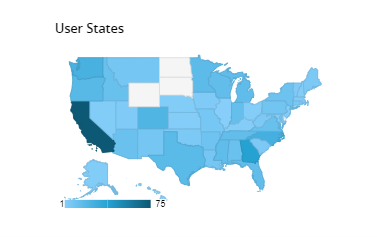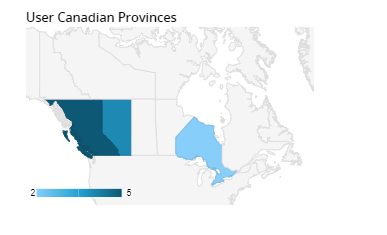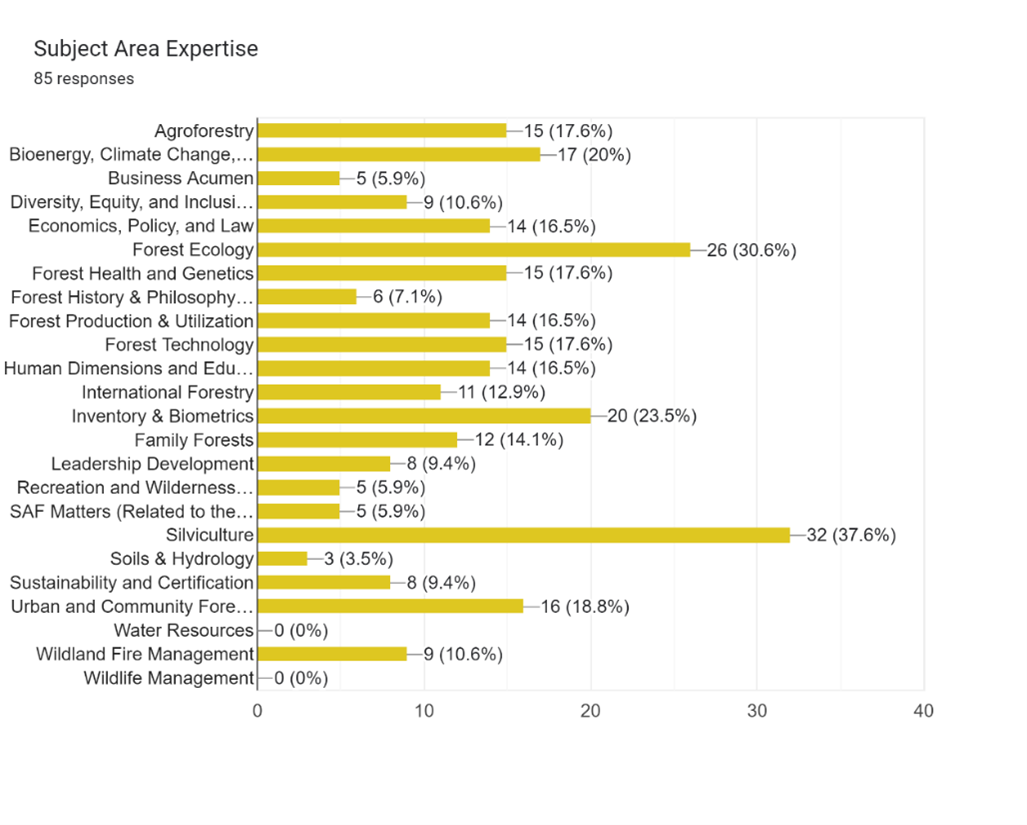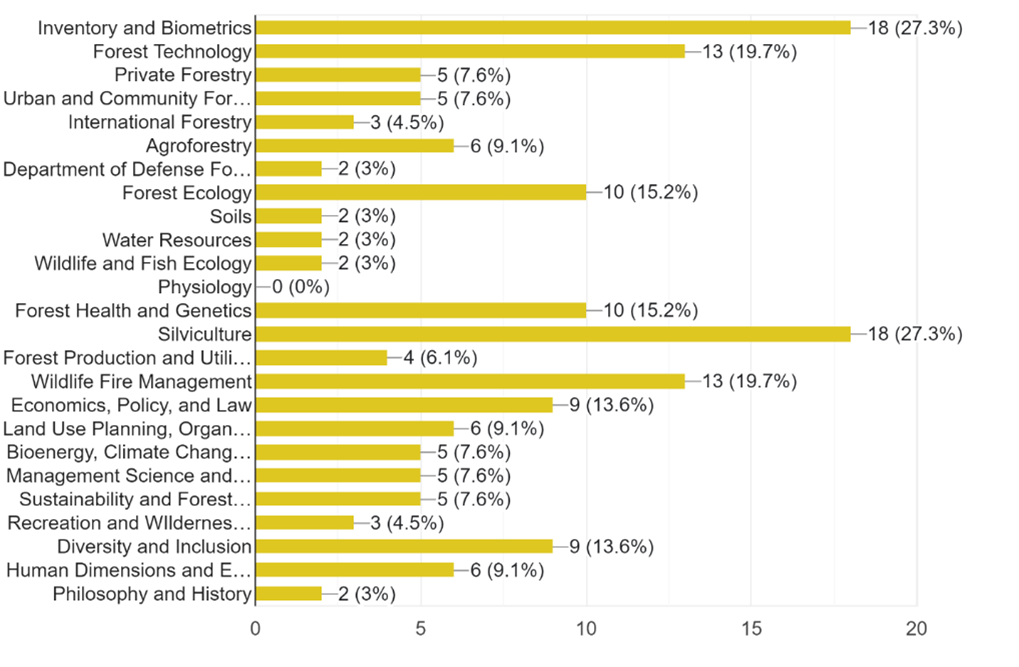Deep Dive into the Call for Proposals: Your Questions Answered!
By
Amy Juliana
This year the call for proposals received over 450 submissions focused on twenty-four topics, six subthemes, and five tracts. But who submits to the call? Who reviews the proposals? And how is the schedule crafted? In this post we will break down these questions and more.
Who submitted to the call for the proposals?
You did! Forestry and natural resources professionals and students (undergraduate and graduate) across all disciplines and career levels from around the world participated.
 |
The largest concentration of submitters was from the state of California, Georgia, and North Carolina, and Washington. North Dakota, South Dakota, and Wyoming did not have any submissions. |
 |
Eleven proposals were submitted from Canadian Provinces with the most submitters residing in British Columbia. |
 |
The Call for Proposal extended beyond the United States. This year we received proposals from China, Kenya, Niger, Nigeria, Bangladesh, United Kingdom, Pakistan, and Nepal. |
Who reviewed the call for proposals?
SAF Members! To evaluate, rank, and review proposals that are original, have high appeal, and spotlight the practice of forestry, we rely on a large team of subject matter experts. The call to review the science and technical program promoted to SAF members through emails from SAF National and direct shares from science leaders in the Forest Science and Technology Board (FS&TB) and working groups. 77 subject area experts were selected.

Volunteers were asked to self-describe their subject area expertise using twenty-four topics highlighting the various disciplines in the field and industry. These self-descriptions help us match reviewers to the proposal types that best fit their areas of expertise.
Volunteers were also asked to include additional experience with professional reviewing and the SAF National Convention.
For subject areas with low representation, the FS&TB reviewed proposals.
How are the proposals reviewed?
Proposals were blindly peer reviewed and ranked against three overarching buckets – general application, practice of forestry, and audience appeal. Each criterion was weighted uniformly and evaluated on a scale of one to five.
Subject area experts ranked the proposals, provided technical comments, and suggested final recommendations. On average, a reviewer spent 10 minutes evaluating and scoring a proposal. Therefore, a conservative estimate of contributed time to the review process is 4,500 hours!
Are SAF Working Groups involved?

Yes! Of the selected reviewers, over 76% were enrolled in one of SAF's twenty-five working groups. This is significant because a major objective of working groups is to develop, evaluate, and present science and technical sessions and workshops, especially cross-working group, or interdisciplinary programs, aimed at understanding the management, conservation, and policy development of forest resources at the SAF National Convention. SAF working groups are a unique member benefit that offers SAF members opportunities to network, connect, and enhance the use of science and technology in the profession. SAF working groups also contribute to the overall technical session program up to 30%. The chart on the right shows the representation from each Working Group.
The highest represented groups included Inventory and Biometrics, Silviculture, Forest Technology, and Wildlife Fire Management.
To enroll in a working group, and become more engaged in our communities of interest, please visit our Working Group webpage.
How is the final schedule created and who selects the speakers?
The final schedule is created by SAF National using the scores and recommendations submitted by the reviewers. The schedule balances topics, themes, tracks, speakers, and disciplines to create a diverse program of the highest value and quality.
I did not submit a proposal by the deadline. Can I still submit it?
No, the call for proposal deadline for SAF2023 is passed. We encourage you to submit to the SAF2024 in Loveland, Colorado. The Call for Proposals will open mid-February.
I submitted. When will I be notified?
All speakers that submitted to the program will receive notification of their status by June 30.
When will the technical schedule be posted?
The final science and technical program will be available this July and posted on our website. In the meantime, check out our
schedule at a glance to see when sessions are scheduled or
register to secure your early-bird rate.
Forestry is a vast and ever-evolving field, and we rely on our experts to review the science and technology program for the SAF National Convention. Thank you to those who dedicated the time and knowledge to this year’s program.
Amy Juliana is the Science and Technology Manager at SAF. For more information about the science and technical program, email [email protected].